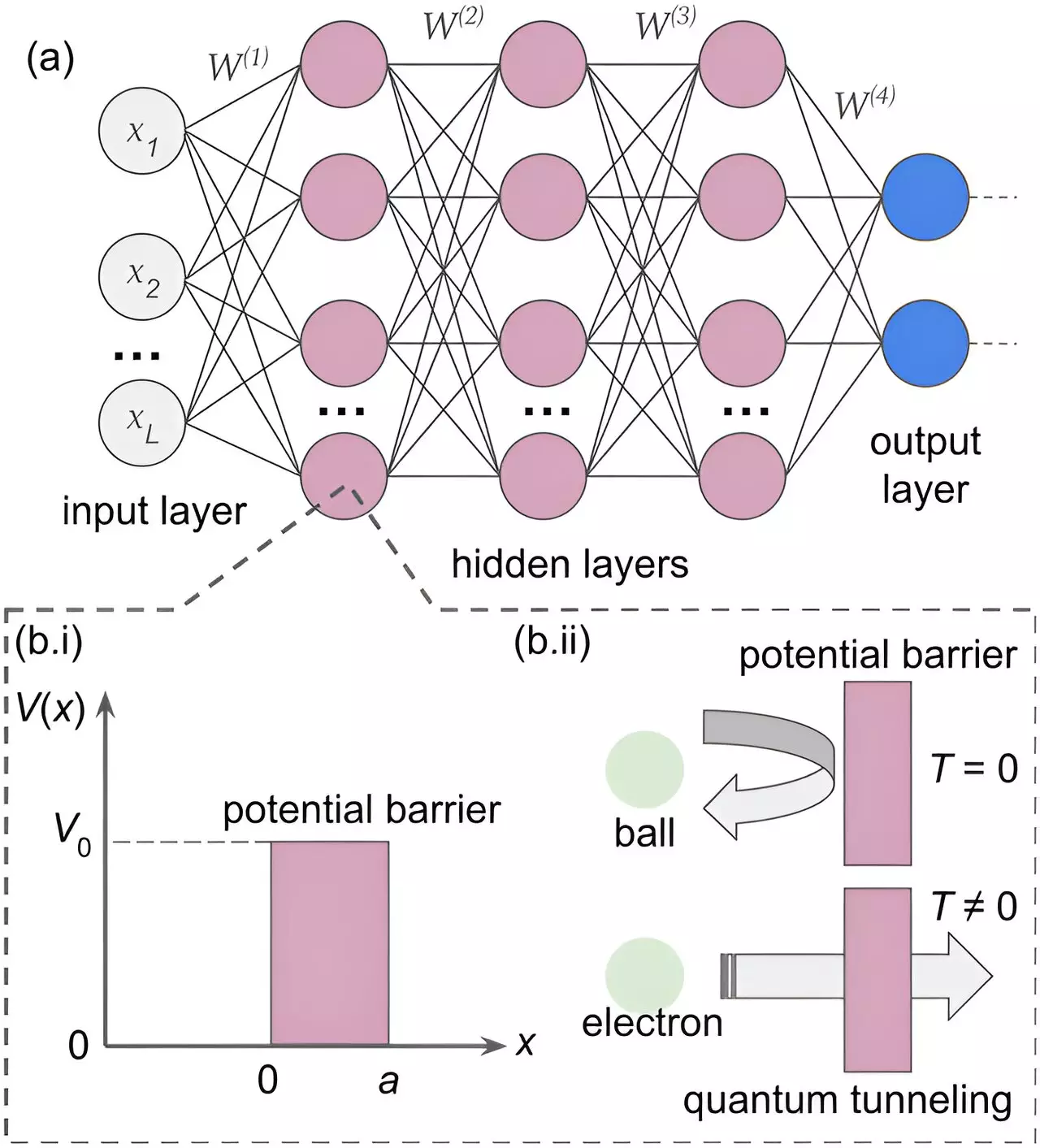The intersection of optical illusions and artificial intelligence (AI) may seem like an unlikely pairing at first glance. However, recent research has delved into this intriguing connection, shedding light on how the human brain processes visual stimuli in the form of optical illusions. These illusions have mesmerized and puzzled us for centuries, tricking our brains into perceiving images that may or may not be real. In the realm of AI, emulating and understanding human vision can pose a significant challenge. While modern computer vision systems can recognize complex objects like art paintings, they often struggle with deciphering optical illusions. This limitation highlights the intricate nature of human cognition and the complexities involved in replicating it through artificial neural networks.
In a groundbreaking study published in APL Machine Learning, researchers have harnessed the power of quantum tunneling to transform neural networks’ ability to perceive optical illusions with human-like acuity. By incorporating principles from quantum mechanics into the architecture of a neural network, researchers have unlocked a new realm of possibilities in the realm of AI. Quantum tunneling, a phenomenon where particles can traverse seemingly impassable barriers, serves as a catalyst for enhancing the neural network’s decision-making process. This quantum-inspired neural network mirrors the human brain’s mechanism of filtering and processing information, enabling it to navigate the complexities of optical illusions with unparalleled accuracy.
The Role of Quantum Mechanics in Understanding Human Cognition
The integration of quantum effects into neural networks not only revolutionizes their performance in mimicking human behavior but also offers insights into the enigmatic workings of the human mind. Quantum mechanics, known for its unconventional and counterintuitive principles, provides a unique perspective on human perception, behavior, and decision-making processes. While conventional theories fall short in explaining the intricacies of human cognition, quantum mechanics offers a fresh lens through which to explore the mysteries of the brain. The utilization of quantum computational algorithms showcases the efficiency and versatility of quantum-inspired neural networks, paving the way for unprecedented advancements in AI research.
The research conducted on quantum-tunneling neural networks has unraveled the enigma of optical illusions, such as the Necker cube and Rubin’s vase, with unparalleled clarity. When confronted with ambiguous visual stimuli, the neural network trained with quantum tunneling capabilities exhibited a nuanced understanding of the illusions’ dual interpretations. Unlike traditional neural networks, which often struggle with oscillating between conflicting outputs, the quantum-tunneling neural network demonstrated a remarkable ability to hold both interpretations simultaneously before reaching a definitive conclusion. This phenomenon mirrors the human brain’s cognitive process when faced with conflicting perceptions, underscoring the quantum neural network’s human-like cognitive capabilities.
In an era dominated by deepfakes and fake news, deciphering the intricacies of human perception and distinguishing reality from illusion has never been more pertinent. The integration of quantum effects into AI not only enhances the neural network’s ability to tackle optical illusions but also offers profound implications for combating misinformation and manipulation in the digital landscape. By grasping how our brains process illusions and construct models of reality, researchers can equip society with the tools to navigate the ever-evolving media landscape. Moreover, the exploration of quantum effects in social behavior and opinion radicalization within social networks opens new avenues for understanding and mitigating the spread of misinformation.
As researchers continue to push the boundaries of quantum-powered AI, the prospect of conscious robots on the horizon looms tantalizingly close. By leveraging quantum mechanics to imbue neural networks with human-like cognitive processes, the evolution of AI towards sentient beings becomes increasingly plausible. The fusion of quantum-tunneling principles with AI lays the groundwork for a new era of intelligent machines that can navigate complex tasks with ingenuity and adaptability. While the road to conscious robotics may be fraught with challenges and ethical considerations, the promise of quantum-powered AI heralds a future where machines and humans coexist in harmony, transcending the boundaries of conventional AI.
The convergence of optical illusions, quantum mechanics, and neural networks represents a paradigm shift in AI research, offering a glimpse into the untapped potential of quantum-powered cognitive systems. By unraveling the mysteries of human perception and cognition through quantum-inspired AI, researchers are paving the way for a future where machines possess human-like consciousness and intelligence. The journey towards conscious robotics may be fraught with uncertainties, but the transformative impact of quantum-powered AI on society’s technological landscape is undeniable.


Leave a Reply